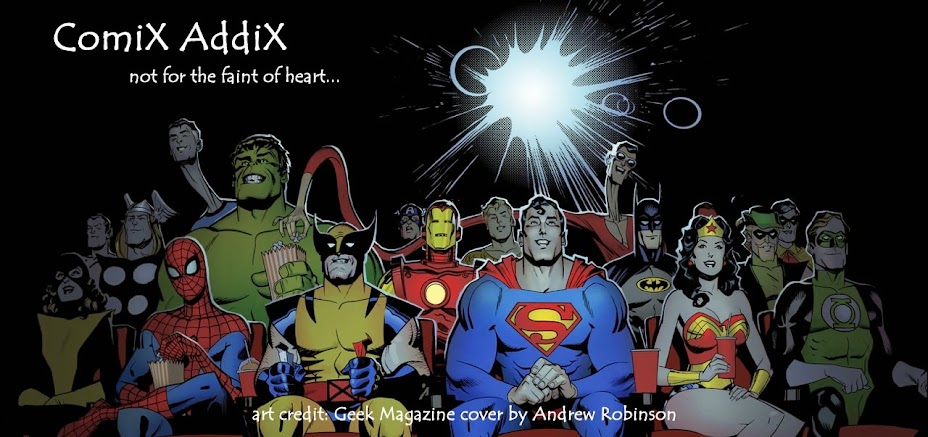Like all
professional nerds, I have a database listing all the comics (and related items) in my collection -- with columns for identifying details such as authors, artists (including pencilers, inkers, AND colorists), publication dates, and purchase info for each issue, etc.
(A total dork, I know. Perhaps you doubted my true-fan bona fides?)
However, no. I was not satisfied that I could navigate that database easily enough to readily locate which issue should follow the next in the Holy Chronology of Comic Book Publications.
No, I would need to generate a "reading order" showing the sequence of all the comics at once, perhaps week by week -- starting from, say, January 1960. Something that may look like this:
Now, I am truly a glutton for the punishment my over-organizational tendencies cause me, but I had no idea what taking this path to an accurate and usable reading order would require of me.

First, I discovered that the "publication" date for a comic and its "cover" date are two different things to the Big Two. The actual publication date (or release date) is two to three months (depending on which decade the comic was published) EARLIER than the date on the cover of the comic.
(a consequence, I learned, of how long the books were
intended to linger on the news stands back in the day).
intended to linger on the news stands back in the day).
My reaction to this discovery:
WTF? My database has been wrong all these years!?I also learned that, at some uncertain point in comic history and for an unclear period of time, comics were released on Tuesdays (instead of Wednesdays, as is the current practice).
So, of course I HAD to go back and correct all the back issue dates for the Marvel and DC comics in my database.
But, how to do that? While some comics are released consistently from month to month, not every comic is published every month.
I started by going to comiXology.com to check all the publication dates against my database.
However, I quickly found that the comiXology dates for older issues are often inaccurate.
So, I found a listing of calendar dates online that goes all the way back to the '60s and before (which you can find here).
 Then I cross-checked the pub dates I had with those posted on my two main resource sites for data on comics: mycomicshop.com and Comic Vine.
Then I cross-checked the pub dates I had with those posted on my two main resource sites for data on comics: mycomicshop.com and Comic Vine.Sheesh, THAT was FUN.
But, through this process, I also discovered that Vertigo is not an "independent" publisher, as I had originally thought, but an imprint of DC comics.
R U F-ing Kidding ME? I have to correct all of those dates, too?!
Shoot me now.
To be continued...




No comments:
Post a Comment